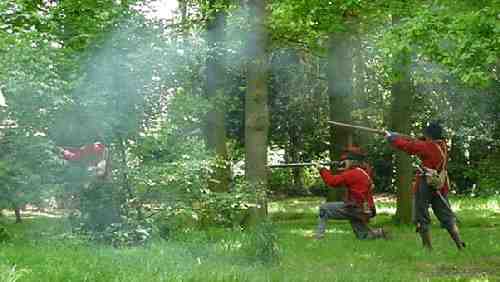This second post in the living history series is on creating good living history characters. The previous blog post was on the five steps for scripting living history events, of which creating your living history characters is the fifth step.

Living history events are a sort of promenade theatre with a lot of improvisation. Re-enactors are often mingled with the public, and many will be answering questions one to one. So living history characters need to be more robust than if you were writing for another medium.
Here’s what you need to do:
- Outline the scenario
- Work out what characters you need for the scenario
- Provide background for each character
- Define limits for improvisation
- Cast people as your main characters & brief them
1. Outline Your Scenario

Decide what your scenario is, and how you want it to go. Let’s take as an example a scenario involving a young woman becoming pregnant out of wedlock. This was fairly common in the past. What we need to decide is what the obstacle is to her marrying her lover (if there isn’t an obstacle then it becomes a scenario about arranging a wedding rather than about pregnancy out of wedlock). Some of the options here are that her lover is:
- already married
- of the wrong social class to be an acceptable match
- away from the parish (with the army, travelling, or was possibly just passing through)
There are of course a whole load of other options on top of those. You just need to pick one. Also the objection could be from the parents of either party and not from the lovers (think Romeo & Juliet). Either way we’re going to have a parish court involved to help remove the obstacle (or provide a solution).
2. Defining your Living History Characters
The first thing you need is to understand what characters you need.
Our primary living history characters will be the young woman, and her lover. We’ll also need members for a parish court, at the least a constable and a couple of elders. We’ll also need some witnesses to give ‘evidence’.
You might want to draw a relationship diagram with your list of characters. Especially you need to work out where the conflict arises and who knows what.
3. Background for Living History Characters
Main characters
They both need to have details on their relationship and social position within the village/town. Both need an objective, if they wish to marry then there should be an obstacle for the court to overcome. Conflict is what drives stories, so this needs to be there.
Parish Court Members
A parish court looking into this will also have a constable and a couple of elders to hear the case. These are recurring main characters, they can be involved in many scenarios. They also need a bit of background. Who are they and what are their responsibilities on the parish court. What is the due process and where are the limits of the decisions they can make.
Witnesses
There will also be a need for witnesses, the parents of the young woman at the very least. Depending on the tack you take there may be another candidate for paternity, or a reason why the lover cannot marry the young woman. All of the witnesses need a few lines on what they believe they know as facts in the case. They might also have a motivation for giving evidence.
4. Limits on Improvisation
We’re encouraging improvisation, but we need to set ground rules. The idea is to get our players to think like people from the period. So we need to give them just enough freedom to do that well and be entertaining to those watching. Some ground rules might be:
- Don’t invent new characters or evidence (this risks the writer/director having to add people on the fly)
- Stay in character and remember the briefing you have been given
- Remember that no-one else knows the whole picture, so make sure to give the information you have if it is helpful (but conceal, dissemble and lie if it helps achieve your objectives and is in character)
- If in doubt, be quiet or say that you do not recall.
5. Casting
The most believable characters are well rounded. Each person should, at the very least, know their age, occupation and connection to the scenario. It works best if people play someone analogous to their modern self.






